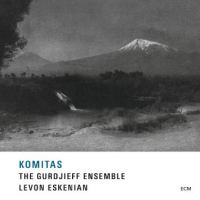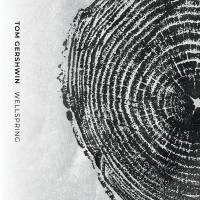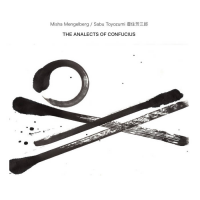Home » Jazz Articles » Album Review » The Gurdjieff Folk Instruments Ensemble: Komitas
The Gurdjieff Folk Instruments Ensemble: Komitas
With characteristic imagination Eskenian has taken the same approach of reversing the process of piano compositions by renowned Armenian composer, ethno-musicologist and priest Komitas Vardapet who lived at the turn of the 20th century into pieces arranged for the Gurdjieff Folk Instruments Ensemble. Komitas is considered to be a national saint in Armenia and father of Armenian music. Much like Hungarian composer Bela Bartok, he also took folk music from his country and incorporated its characteristics in order to develop a national musical style. As can be read from the liner notes, Eskenian has been navigating himself through Komitas' writings where he is mentioning the use of certain instruments. According to the album's very detailed and informative liner notes, Komitas was also taken as a reference point by de Hartman when he was arranging Gurdjieff's music for the piano. Since Komitas' writing had an influence over Eskenian's approach towards re-imagining Gurdjieff's music, it seems that in a way, the music on Komitas has come a full circle.
Yet, for all the apparent and obvious historical leanings, the music here is not a mere scholarly treatise. The arrangements are used as a signposts where improvisations also take part in order to elevate these 18 tracks to a different plateau. Eskenian and his Ensemble are taking a wondrous journey through the music and the world of another musical mastermind and again the breadth and depth of their artistry which is expressed throughout this magnificent collection is absolutely colorful, emotional and mesmerizing. The result to this is rich and deep musical story telling which finds this able ensemble journeying deep into the works by this renowned composer and through his works into their country's vast musical treasures.
The whole album feels like a complete whole and each track feels like series of movements. Along the way, this ensemble is running a fascinating gamut of moods and colors. Imbued with intimate arrangements, the moods shift from quiet introspections, as on the opening tracks such as "Zula" or "Tsaghik Asem, Mani Asem" to "Havun" is a poignant duet for two doudouk flutes, where the individual or paired instruments resonate deeply with their overwhelmingly heart-rending and mournful tone. This deep and meditative mood is disrupted with tracks such as "Msho Shoror" or "Mankakvan, Nvag XII" with the loud zurna coming to the fore. "Lorva Gutanreg" is a beautiful mediation on pough, a wooden flute which simple melodies produce feelings of yearning. "Yot Par" or "Seven Dances" is a seven part suite where each piece is tied to a city in Armenia where they originated from. The music unfolds slowly and dramatically, where the musicians achieve a deep and intimate communion as their instruments mesh together. "Hov Arek" (Dear Mountain Send me a Breeze) is a traditional song and the only one to feature a vocal. The whole set end with a very tender and emotional track "Akna Oror" where two duduks intertwine gently together and minimally supported by santur.
There are many transcendental moments on this recording. Drawing on Armenia's vast legacies of both religious and secular musics, these different strands both meet and mesh together on this record. As on most ECM releases this music also invites contemplation, and more than that, it provides a path into finding a deeper aspect of oneself. Komitas is an outstanding achievement both for its depth and the way musicians interconnect inside the music. These 18 songs are truly united in a tidal wave of sounds, history, emotions and mystery.
Track Listing
Zulo; Tsaghik Asem, Mani Asem; Msho Shoror; Mankakan Nvag XII; Lorva Gutanerg; Yot Par (Seven dances): Manushaki Of Vagharshapat; Yot Par (Seven dances): Shushiki Of Vagharshapat; Yot Par (Seven dances): Unabi Of Shushi; Yot Par (Seven dances): Marali Of Shushi; Yot Par (Seven dances): Yerangui Of Yerevan; Yot Par (Seven dances): Het U Araj Of Karin; Yot Par (Seven dances): Karno Shoror; Hov Arek; Gutane Hats Em Berum; Hoy, Nazan; Havik; Akna Oror
Personnel
Gurdjieff Ensemble
band / ensemble / orchestraEmmanuel Hovhannisyan: duduk, zurna, pku; Avag Margaryan: pogh, zurna; Armen Ayvazyan: kamancha; Aram Nikoghosyan: oud; Meri Vardanyan: kanon; Vladimir Papikyan: santur, voice; Davit Avagyan: tar; Mesrop Khalatyan: dap, dhol; Norayr Gapoyan: duduk, bass duduk; Eduard Harutyunyan: tmbuk, cymbal, bell, kshots, burvar; Levon Eskenian: director
Album information
Title: Komitas | Year Released: 2015 | Record Label: ECM Records
Tags
About Gurdjieff Ensemble
Instrument: Band / ensemble / orchestra
PREVIOUS / NEXT
Support All About Jazz
 All About Jazz has been a pillar of jazz since 1995, championing it as an art form and, more importantly, supporting the musicians who make it. Our enduring commitment has made "AAJ" one of the most culturally important websites of its kind, read by hundreds of thousands of fans, musicians and industry figures every month.
All About Jazz has been a pillar of jazz since 1995, championing it as an art form and, more importantly, supporting the musicians who make it. Our enduring commitment has made "AAJ" one of the most culturally important websites of its kind, read by hundreds of thousands of fans, musicians and industry figures every month.



















